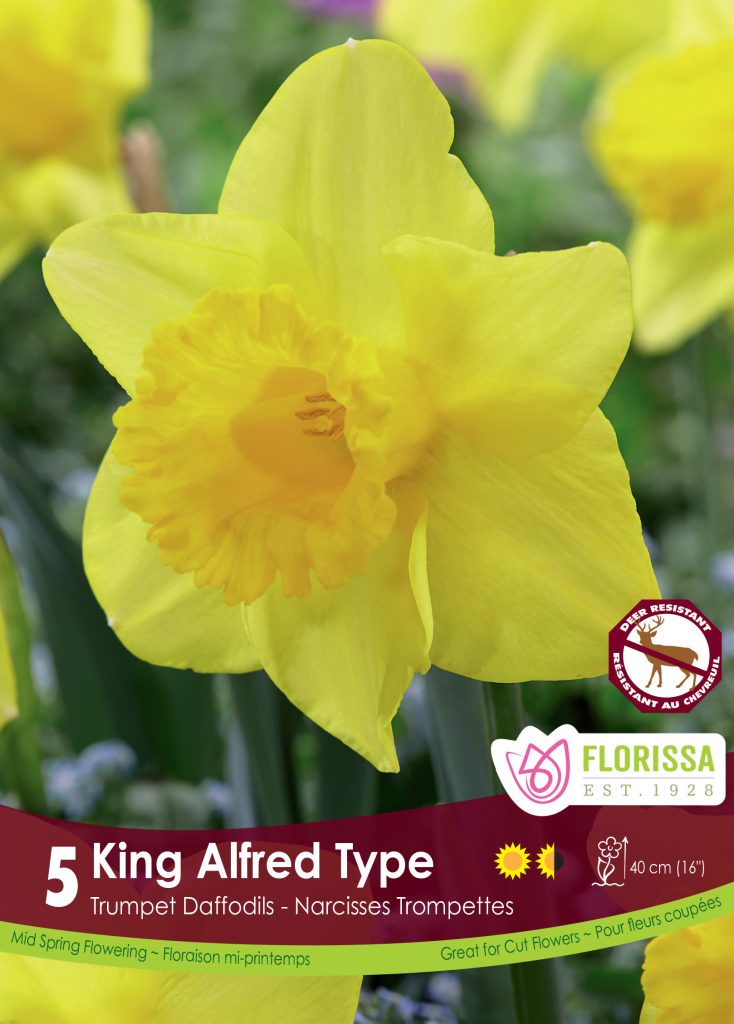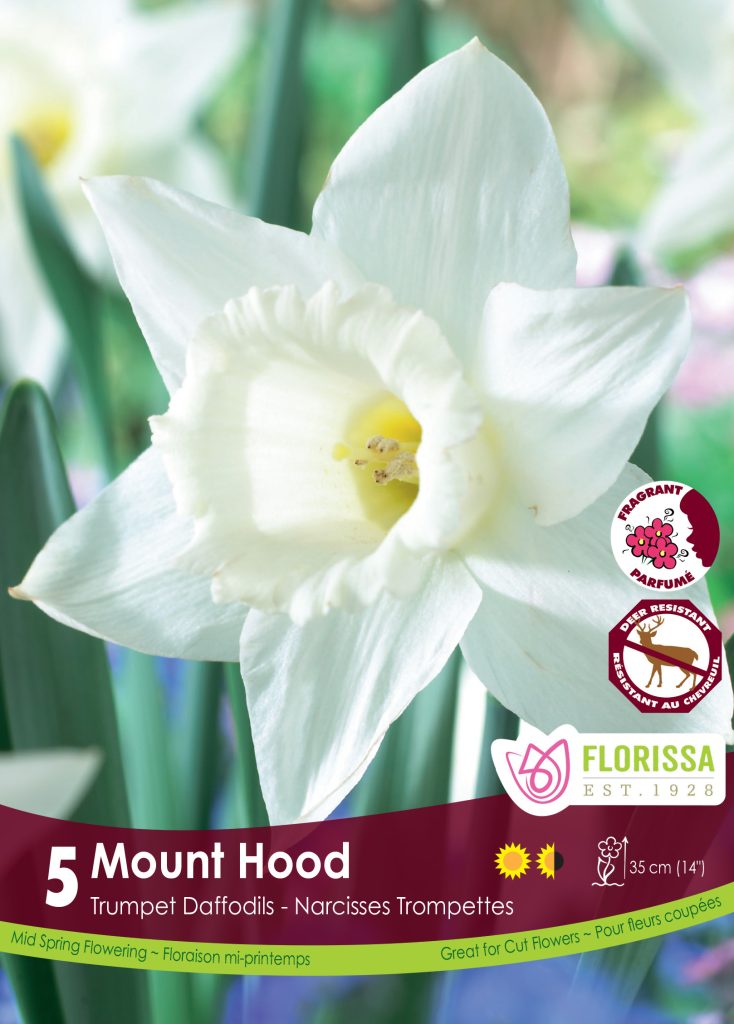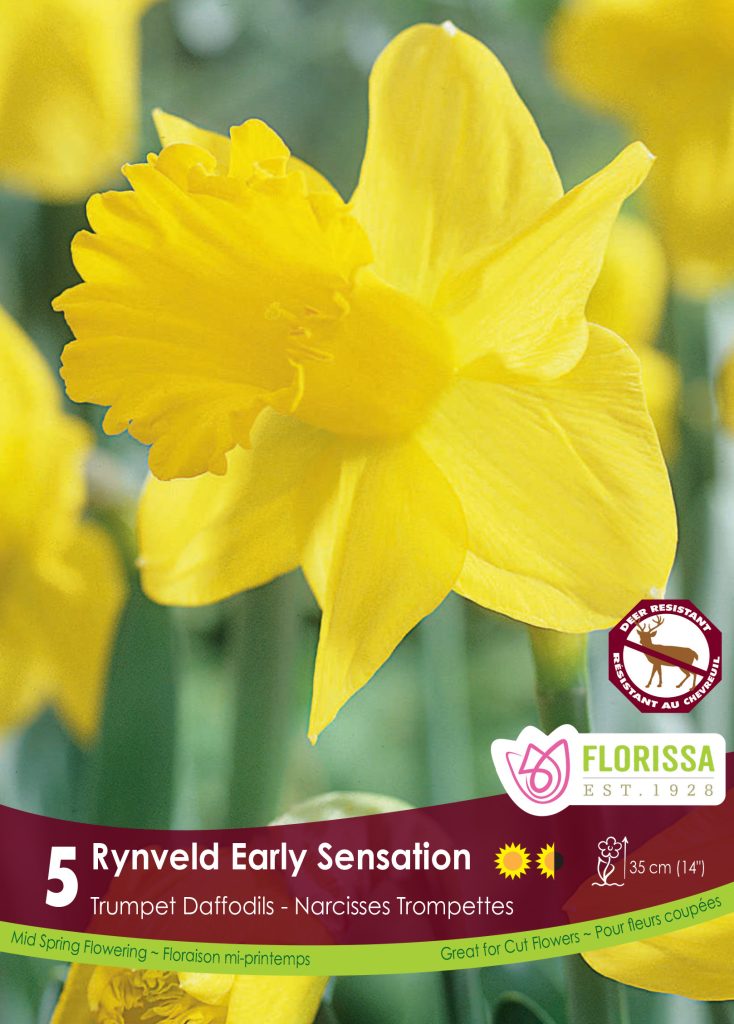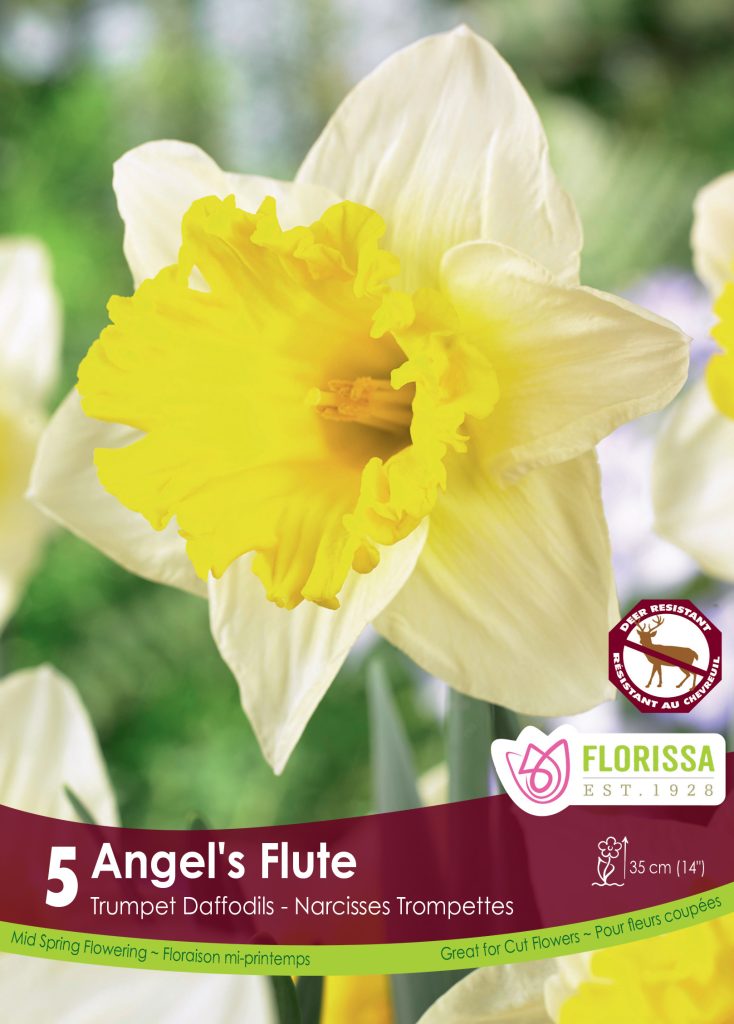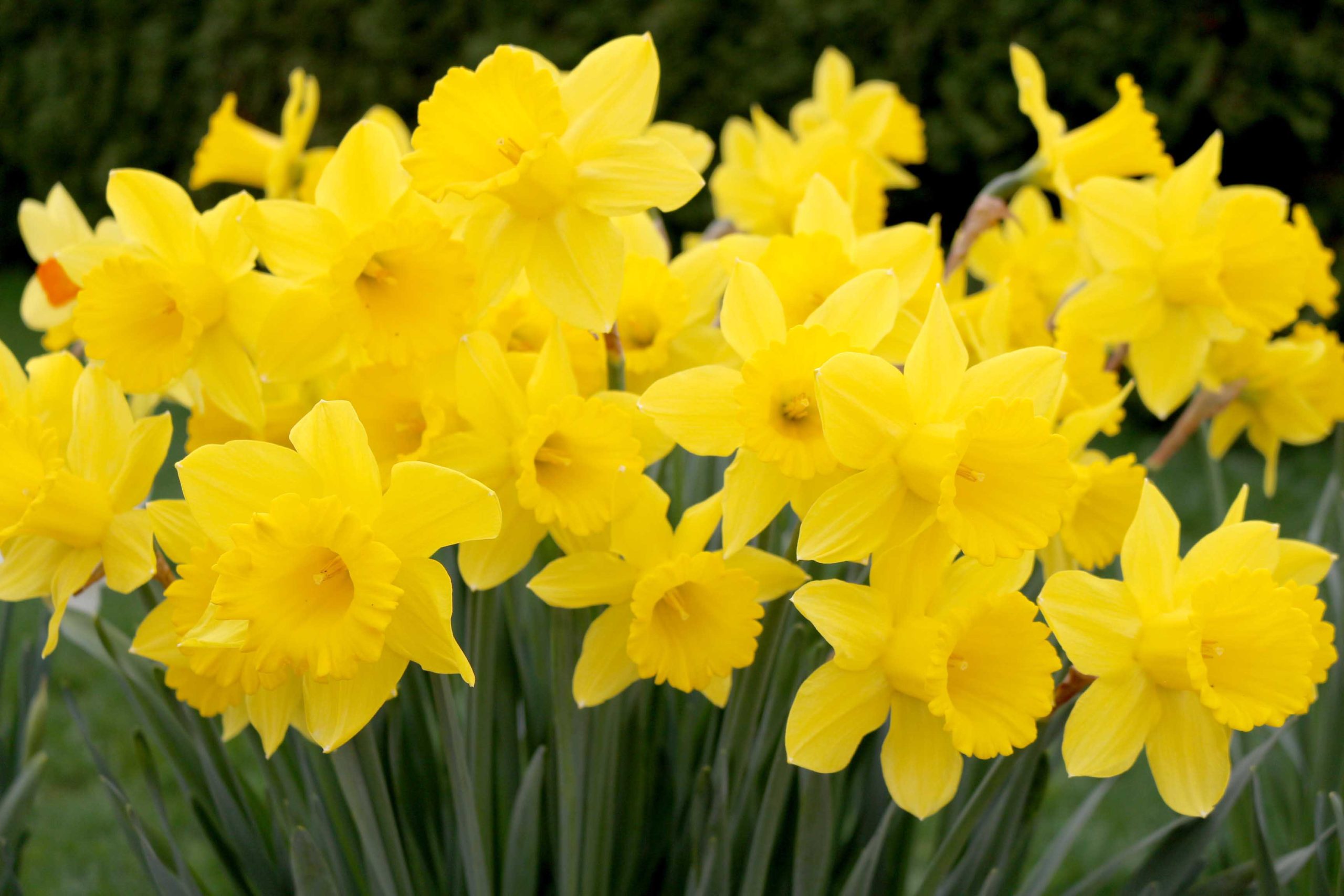
Showcase Flower Bulb: Trumpet Daffodils!
The trumpet daffodil comes from a group of 11 other types of daffodils, such as the double and large-cupped daffodil. What makes the trumpet daffodil unlike other daffodil varieties is its clearly trumpet-like shape. One of the daffodil’s strong points is that this spring-flowering bulb can be left undisturbed in the soil and produce more and more flowers year after year. This makes daffodils perfect for naturalizing – as long as they are planted in a sunny location, with good draining soil. After flowering, remove the flowering stem and leave the foliage attached to the bulb until it turns yellow and you will have flowers every spring.
The trumpet series daffodil has many options for colours, types, and scents. Most commonly known are the solid yellow or white daffodils such as King Alfred, Rynveld Early Sensation, and Mount Hood.
If you’re looking for something a little more interesting, plant the gorgeous two-tone variety, Pink Parasol. Not only gorgeous, but the two-tone, pink and white narcissus is also deer resistant and great for cut flowers. It’s a must-have trumpet daffodil! Another two-tone narcissus is Angel’s Flute, with a combination of white and yellow.
Planting
No matter which trumpet daffodil you choose, it can also be planted in the grass on the condition that mowing is not done until the plants have died back. This means either delaying the first mowing until the foliage of the daffodils has withered back or mowing only the grass between the daffodils until then. The rule of thumb for planting is to plant the bulbs twice as deep as the bulb is tall.
Daffodils like full to partial sun and are rated as Zone 3 for hardiness. As an added bonus they are deer resistant so plant them along borders where they can help protect your garden.
Be sure to plant some Daffodils in your garden this fall to have some Spring blooms. Bulbs will be available in your nearest garden centre in September. I can help you find one!



